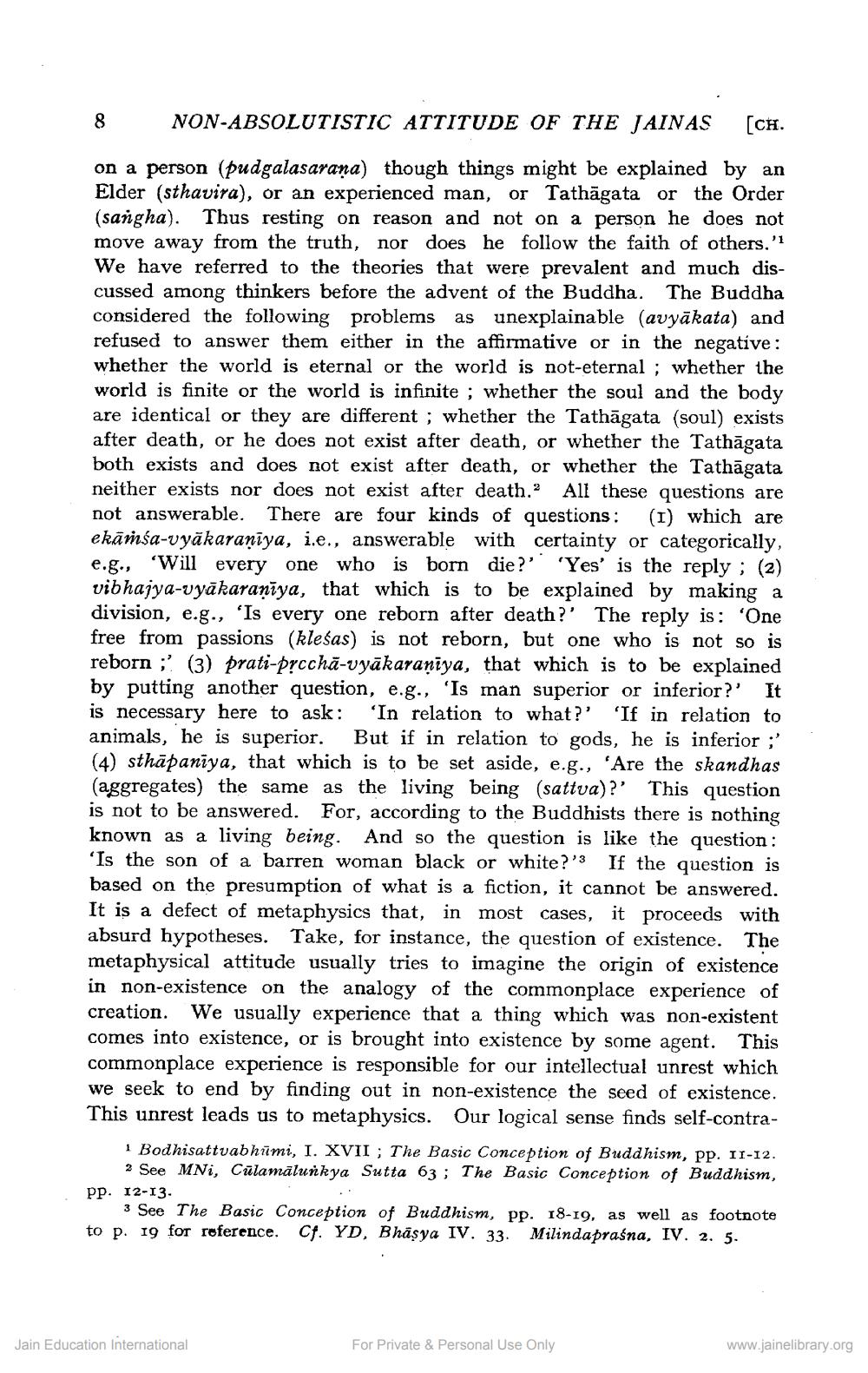________________
8
NON-ABSOLUTISTIC ATTITUDE OF THE JAINAS
(CH.
on a person (pudgalasarana) though things might be explained by an Elder (sthavira), or an experienced man, or Tathāgata or the Order (sangha). Thus resting on reason and not on a person he does not move away from the truth, nor does he follow the faith of others.'1 We have referred to the theories that were prevalent and much discussed among thinkers before the advent of the Buddha. The Buddha considered the following problems as unexplainable (avyākata) and refused to answer them either in the affirmative or in the negative: whether the world is eternal or the world is not-eternal ; whether the world is finite or the world is infinite ; whether the soul and the body are identical or they are different ; whether the Tathāgata (soul) exists after death, or he does not exist after death, or whether the Tathāgata both exists and does not exist after death, or whether the Tathāgata neither exists nor does not exist after death. All these questions are not answerable. There are four kinds of questions: (1) which are ekāmśa-vyākaranīya, i.e., answerable with certainty or categorically, e.g., "Will every one who is born die?' 'Yes' is the reply ; (2) vibhajya-vyākaraniya, that which is to be explained by making a division, e.g., 'Is every one reborn after death?' The reply is: 'One free from passions (klesas) is not reborn, but one who is not so is reborn ;' (3) prati-pycchā-vyākaraniya, that which is to be explained by putting another question, e.g., 'Is man superior or inferior?' It is necessary here to ask: 'In relation to what?' 'If in relation to animals, he is superior. But if in relation to gods, he is inferior ;' (4) sthāpaniya, that which is to be set aside, e.g., 'Are the skandhas (aggregates the same as the living being (sattva)?' This question is not to be answered. For, according to the Buddhists there is nothing known as a living being. And so the question is like the question : 'Is the son of a barren woman black or white?'3 If the question is based on the presumption of what is a fiction, it cannot be answered. It is a defect of metaphysics that, in most cases, it proceeds with absurd hypotheses. Take, for instance, the question of existence. The metaphysical attitude usually tries to imagine the origin of existence in non-existence on the analogy of the commonplace experience of creation. We usually experience that a thing which was non-existent comes into existence, or is brought into existence by some agent. This commonplace experience is responsible for our intellectual unrest which we seek to end by finding out in non-existence the seed of existence. This unrest leads us to metaphysics. Our logical sense finds self-contra
i Bodhisattvabhūmi, I. XVII ; The Basic Conception of Buddhism, pp. II-12.
2 See MNi, Cūlamălunkya Sutta 63; The Basic Conception of Buddhism, pp. 12-13
3 See The Basic Conception of Buddhism, pp. 18-19, as well as footnote to p. 19 for reference. Cf. YD, Bhāsya IV. 33. Milindapraśna, IV. 2. 5.
Jain Education International
For Private & Personal Use Only
www.jainelibrary.org




